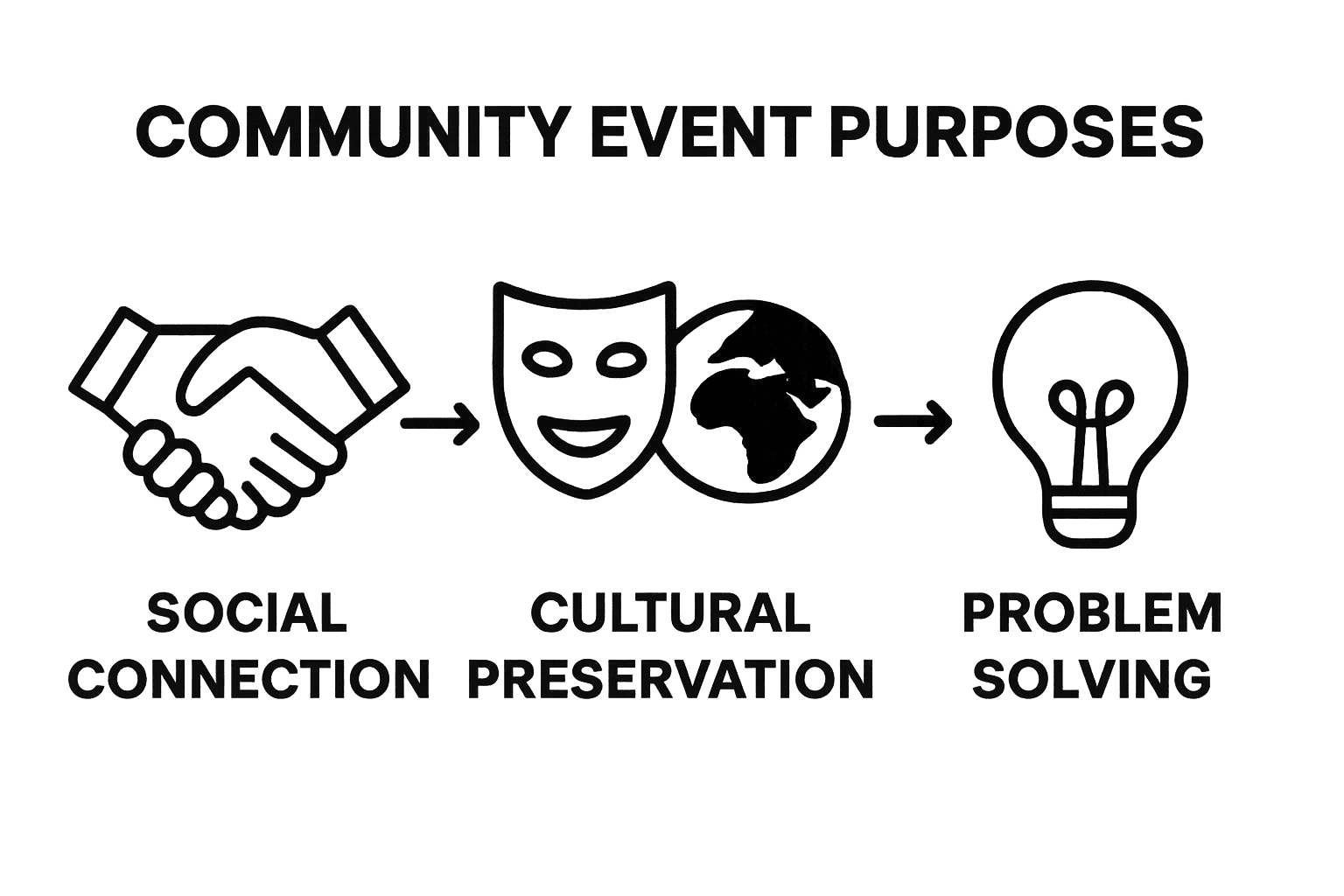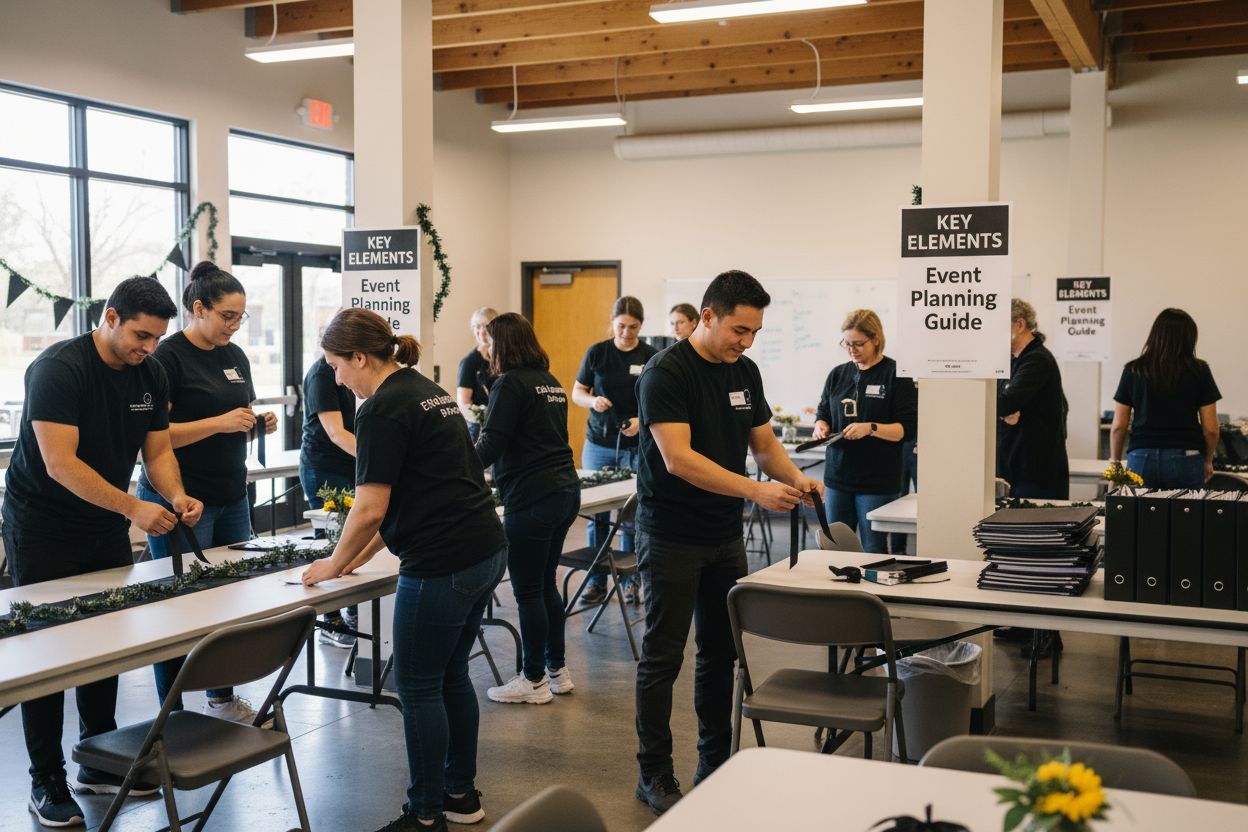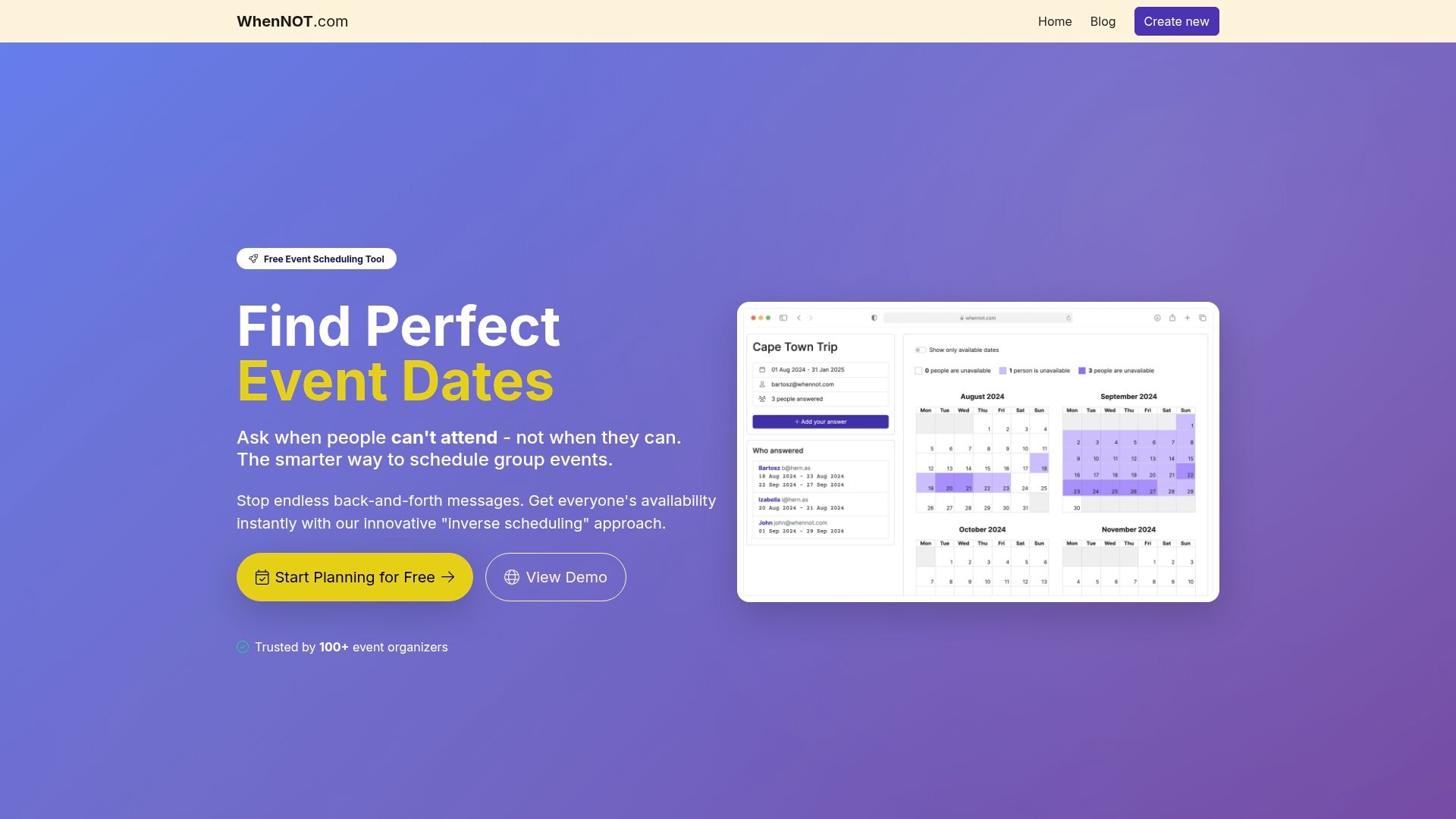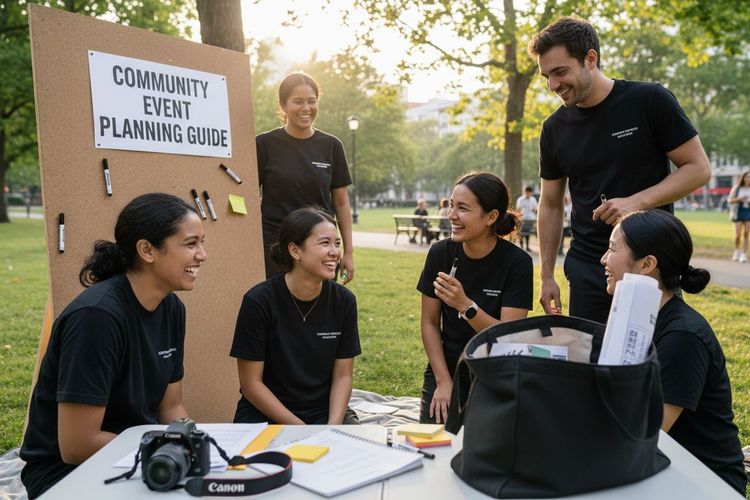Community events are where neighbors turn into friends and strangers turn into allies. Studies show that structured social interactions at events can reduce feelings of isolation and even improve psychological health by up to 40 percent. Most people assume these gatherings are just fun distractions but the real influence runs much deeper. Community event planning not only sparks genuine connections but also builds the kind of resilient support networks that every strong community needs.
Table of Contents
- What Is Community Event Planning And Its Purpose?
- Why Community Events Are Important For Connection And Engagement
- Key Elements Of Successful Community Events
- How To Foster Inclusivity And Participation In Events
- Real-World Examples Of Community Events And Their Impact
Quick Summary
| Takeaway | Explanation |
|---|---|
| Community events strengthen social bonds. | Gathering fosters relationships, enhancing community resilience and interpersonal understanding. |
| Purposeful planning is crucial for success. | Events need clear goals, understanding of participants, and community alignment to have meaningful impacts. |
| Inclusivity enhances engagement and participation. | Removing barriers and ensuring diverse representation creates a welcoming environment that encourages broader involvement. |
| Cultural events promote mutual respect and understanding. | Celebrating diverse traditions fosters empathy and builds bridges across different community groups. |
| Community events address local challenges effectively. | By providing forums for discussion, events can mobilize collective efforts to solve pressing issues in the community. |
What is Community Event Planning and Its Purpose?
Community event planning represents a strategic process of organizing gatherings that bring people together with shared goals, fostering social connections and addressing collective community needs. At its core, this discipline involves carefully designing, coordinating, and executing events that serve multiple purposes beyond simple entertainment.
Understanding Community Event Dynamics
Community events are not random occurrences but purposeful assemblies designed to achieve specific objectives. These gatherings can range from local festivals and cultural celebrations to educational workshops and civic engagement initiatives. According to Iowa State University's Community Planning Research, effective community event planning serves several critical functions:
- Strengthening social bonds and relationships
- Promoting local cultural identity
- Facilitating knowledge sharing and learning
- Addressing community challenges collaboratively
- Creating platforms for mutual understanding
The Strategic Purpose of Community Events
Successful community event planning goes far beyond logistical coordination. It requires deep understanding of local dynamics, community needs, and potential impact. Event organizers must consider multiple dimensions:
Social Connection: Events create opportunities for residents to interact, build networks, and develop a sense of belonging. When strangers become acquaintances and acquaintances become friends, communities become more resilient.
Cultural Preservation: Many community events serve as vehicles for preserving traditions, sharing heritage, and celebrating diversity. These gatherings help maintain cultural continuity and promote mutual respect among different groups.
Problem Solving: Community events can be powerful platforms for addressing local challenges, raising awareness about important issues, and mobilizing collective action. Whether discussing environmental concerns or promoting social justice, these gatherings transform dialogue into potential solutions.
Planning a community event requires thoughtful consideration of the community's unique characteristics, potential participants' interests, and the broader goals of bringing people together in meaningful ways.
The following table summarizes key purposes of community event planning and describes how each purpose benefits the local community.
| Purpose | Description |
|---|---|
| Social Connection | Builds networks, fosters belonging, and strengthens relationships among residents. |
| Cultural Preservation | Maintains traditions, honors heritage, and celebrates community diversity. |
| Problem Solving | Offers platforms for dialogue, collaboration, and action on shared issues. |
| Knowledge Sharing | Facilitates education, resource exchange, and community learning. |
| Collective Identity | Shapes a shared sense of purpose and community pride. |
Why Community Events Are Important for Connection and Engagement
Community events serve as powerful catalysts for human connection, transforming abstract social networks into tangible, meaningful interactions. These gatherings are more than simple meetings; they are intentional spaces where individuals can bridge social divides, share experiences, and build collective understanding.
The Social Fabric of Community Interactions
Connectivity goes beyond digital interactions. Real human engagement happens when people share physical spaces, exchange ideas, and create shared memories. Scientific research from the National Institutes of Health demonstrates that structured social interactions significantly contribute to community well-being by:
- Reducing feelings of social isolation
- Promoting psychological health
- Creating supportive interpersonal networks
- Enhancing collective resilience
- Facilitating knowledge exchange
Breaking Down Social Barriers
Community events provide unique opportunities to transcend typical social boundaries. Diverse interactions become possible when people from different backgrounds, ages, and perspectives gather with shared intentions. These environments naturally encourage:
Empathy Development: By experiencing different perspectives directly, participants learn to understand and appreciate varied life experiences.
Mutual Understanding: Events create safe spaces for dialogue, helping community members recognize their interconnectedness despite apparent differences.
Collaborative Problem Solving: When people connect personally, they become more likely to work together on community challenges, moving beyond theoretical discussions to practical collaboration.

Ultimately, community events are not just gatherings but vital mechanisms for building social capital. They transform individual experiences into collective narratives, strengthening the intricate web of human relationships that form the foundation of resilient, supportive communities.

Key Elements of Successful Community Events
Successful community events require meticulous planning, strategic thinking, and a deep understanding of community dynamics. These gatherings are complex ecosystems that demand careful consideration of multiple interconnected factors to create meaningful, engaging experiences.
Strategic Event Design and Purpose
Every impactful community event starts with a clear, well-defined purpose. According to Event Management Research from Portland State University, successful events are characterized by intentional design that aligns with specific community objectives:
- Establishing precise event goals
- Understanding target audience demographics
- Creating measurable outcomes
- Ensuring alignment with community values
- Developing comprehensive event frameworks
Critical Organizational Components
Putting together a successful community event involves managing several crucial organizational elements. Effective coordination becomes the backbone of event success, requiring:
Clear Communication: Developing transparent communication channels among organizers, volunteers, and participants ensures smooth event execution.
Resource Management: Efficiently allocating financial, human, and logistical resources determines an event's feasibility and impact. This includes budgeting, volunteer recruitment, and strategic planning.
Inclusive Planning: Designing events that welcome diverse participants, considering accessibility, cultural sensitivity, and varied community needs.
Successful community events transform abstract ideas into tangible experiences, creating platforms where collective imagination and shared purpose converge. By meticulously addressing organizational details, event planners can craft gatherings that resonate deeply with community members, generating meaningful connections and lasting positive impacts.
This table provides an overview of the main organizational components essential for successful community event planning, clarifying each element's specific role.
| Organizational Component | Role in Event Success |
|---|---|
| Clear Communication | Ensures information flows smoothly among organizers, volunteers, and participants. |
| Resource Management | Allocates financial, human, and logistical resources efficiently. |
| Inclusive Planning | Addresses accessibility, cultural sensitivity, and diverse community needs. |
| Strategic Alignment | Guarantees the event's goals match the community's values. |
| Measurable Outcomes | Defines criteria to evaluate event impact and effectiveness. |
How to Foster Inclusivity and Participation in Events
Creating truly inclusive community events requires intentional design that goes beyond surface-level diversity, focusing on genuine engagement and meaningful participation from all community members. This approach transforms events from simple gatherings into powerful platforms for collective representation and shared experience.
Removing Participation Barriers
Research from the Centers for Disease Control and Prevention highlights the critical importance of systematically addressing barriers that prevent community participation. Effective inclusivity strategies involve:
- Eliminating financial participation constraints
- Providing multilingual communication
- Ensuring physical accessibility
- Offering flexible event timing
- Creating welcoming, culturally sensitive environments
Designing Culturally Responsive Experiences
Inclusive event planning requires deep understanding of community diversity. Cultural responsiveness means creating spaces where every participant feels genuinely valued and represented. This involves:
Representation: Actively involving diverse community members in planning and leadership roles, ensuring multiple perspectives shape the event's design.
Accessibility: Going beyond physical accommodations to create psychological safety, where participants feel comfortable expressing themselves authentically.
Flexibility: Developing event structures that can adapt to different cultural practices, communication styles, and community needs.
Successful inclusive events recognize that true participation means creating environments where differences are not just tolerated, but celebrated as essential components of community strength. By intentionally designing experiences that welcome and empower all community members, event organizers can build bridges of understanding and mutual respect.
Real-World Examples of Community Events and Their Impact
Community events serve as powerful platforms for transformation, demonstrating how organized gatherings can drive significant social change, foster connections, and address complex community challenges. These real-world examples illustrate the profound potential of strategic event planning.
Health and Wellness Community Initiatives
Neighborhood walking group research reveals how targeted community events can generate substantial health and social benefits. Successful wellness programs demonstrate multiple layers of community impact:
- Improving physical activity levels
- Creating supportive social networks
- Promoting preventative health awareness
- Reducing social isolation
- Encouraging long-term lifestyle changes
Cultural Understanding and Social Cohesion
Community events become bridges across different social groups, transforming abstract diversity concepts into tangible human connections. Meaningful interactions emerge through carefully designed experiences that prioritize:
Cross-Cultural Dialogue: Events that create safe spaces for different cultural groups to share stories, traditions, and perspectives.
Collaborative Learning: Workshops and gatherings that encourage mutual understanding and challenge preconceived notions about different community members.
Shared Experience: Designing events that highlight common human experiences while celebrating unique cultural backgrounds.
These carefully constructed events demonstrate that community gatherings are more than simple meetings. They are intricate social technologies capable of healing divisions, building empathy, and creating collective momentum toward shared understanding and progress.
Make Community Event Planning Effortless with WhenNOT
Planning a community event is all about building real connections, yet many organizers struggle with the toughest challenge—finding a date that works for everyone. The article highlighted how essential coordination, participation, and inclusivity are when bringing people together. But traditional scheduling tools often cause delays, confusion, and burnout, especially when you are trying to organize diverse groups or multi-day events.

Experience a smarter way to coordinate your next community event with WhenNOT. Our free scheduling platform lets you collect everyone’s unavailable dates upfront for fast and seamless planning. There is no need for participants to sign up or memorize passwords. Visualize conflicts instantly and choose the dates that encourage the most participation. If you want to break down barriers and include every voice in your planning process, get started now on WhenNOT and discover what true community engagement feels like.
Frequently Asked Questions
What is community event planning?
Community event planning involves organizing gatherings that bring people together for shared goals, enhancing social connections, and addressing community needs.
Why are community events important?
Community events foster connection, reduce social isolation, promote cultural understanding, and facilitate collaborative problem-solving among community members.
How can I ensure my community event is inclusive?
To foster inclusivity, eliminate barriers to participation, provide multilingual communication, ensure physical accessibility, and create culturally sensitive environments.
What makes a community event successful?
A successful community event is characterized by a clear purpose, effective communication, resource management, inclusive planning, and alignment with community values.
